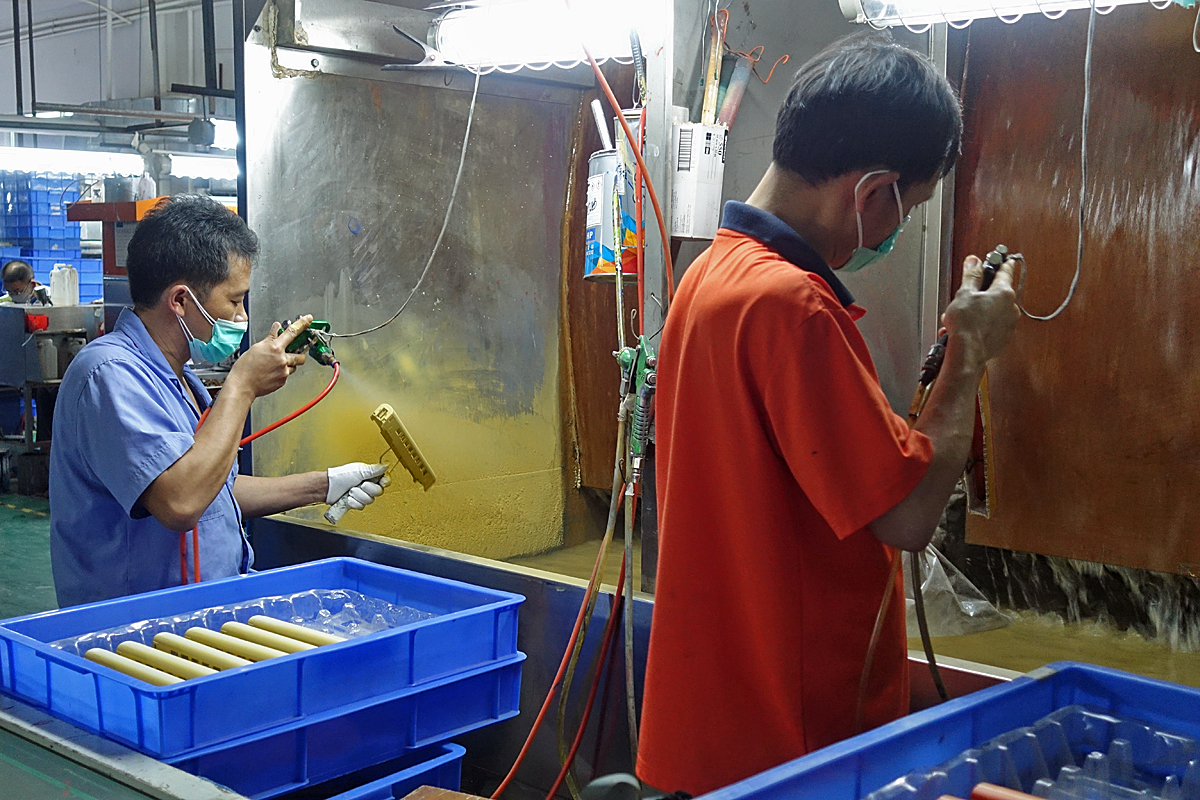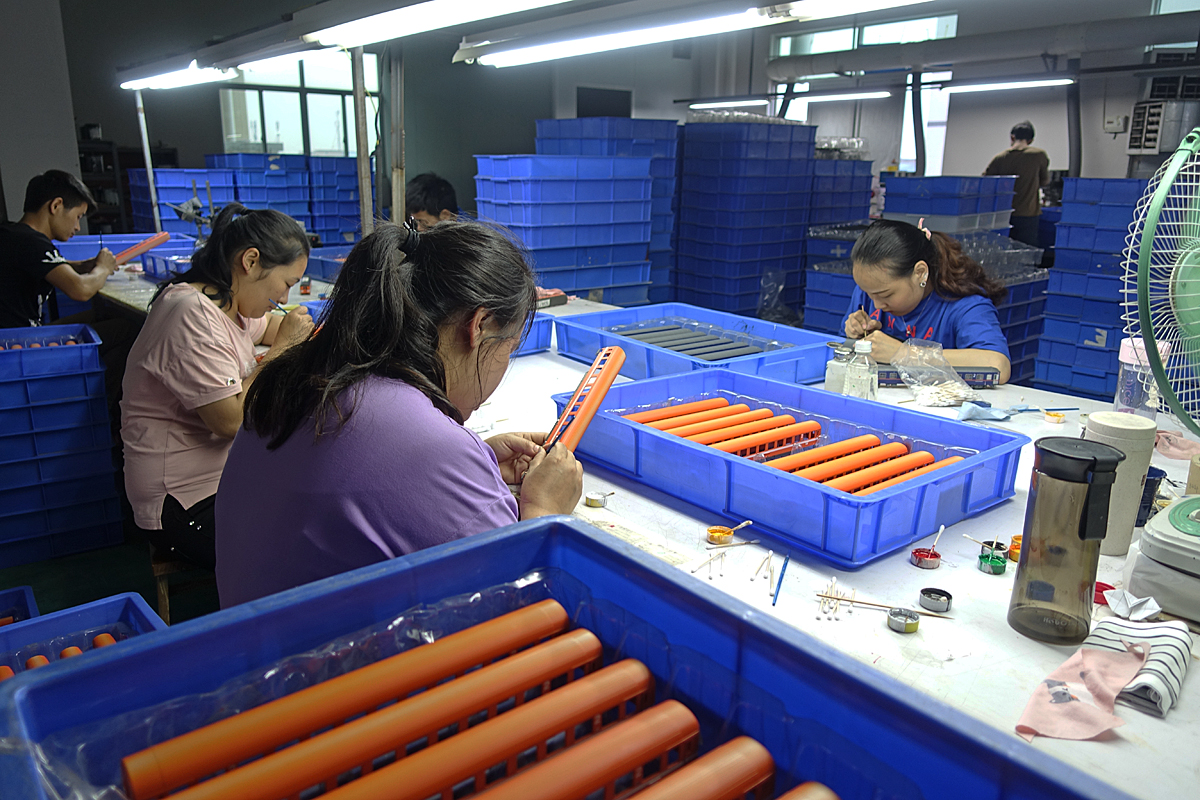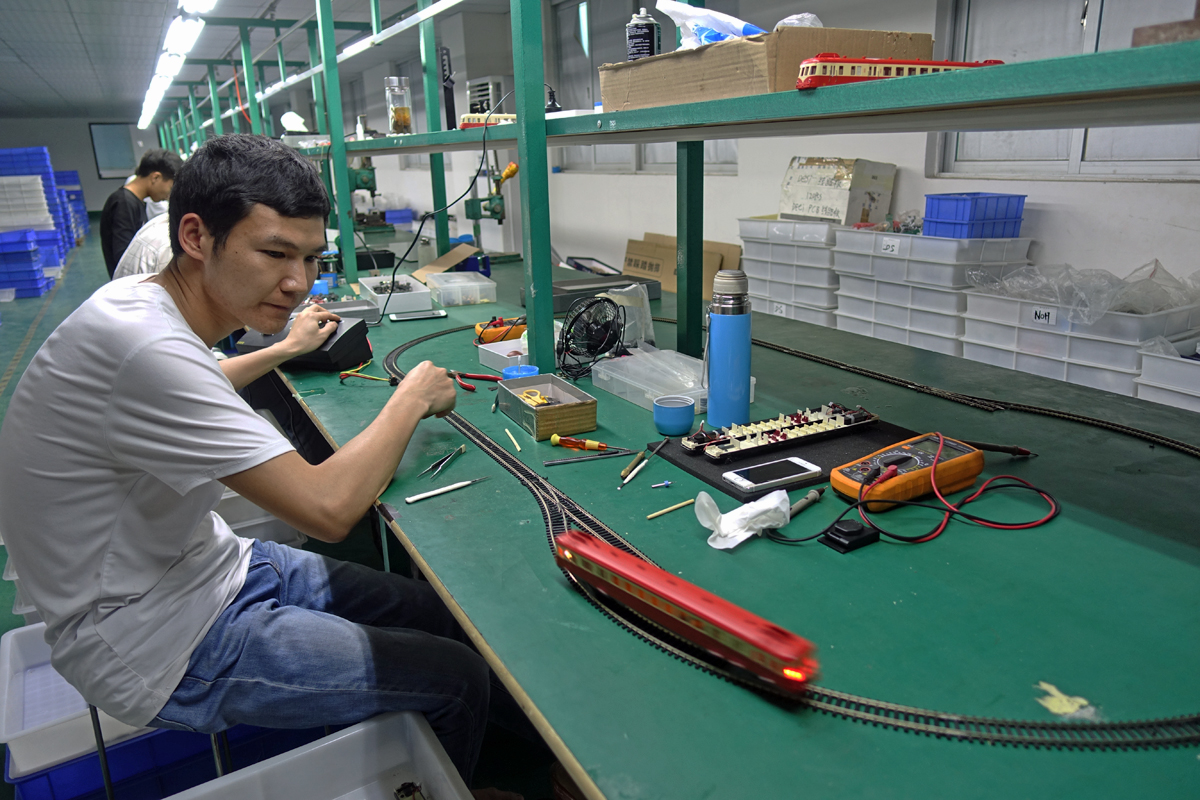Run East factory visit
My visit to China didn’t stay unnoticed for long. A few days after arriving I received a WeChat message from our contact for one of our producers, Cathleen. “I saw you are in China now, why don’t you visit Run East?” At that moment the Run East factory in Guang Dong Province was still some 900 kilometers away. Nonetheless, I decided my next destination would be the factory. Taking a fast G-train got me to Shenzhen in half a day.
Cathleen and general manger Zhu FuLin kindly picked me up at the train station in Shenzhen and drove me to Qishi town (企石镇) and the factory. Plastic injection machines can easily be bought on the market anywhere in the world. Making the actual moulds (‘molds’ in American English) for the injection machines is highly skilled work. China is one of the few countries where skills to do the tooling, relatively cheap labor and the plastic injection facilities come together. To produce a highly detailed train model in 1/87 scale, you need precision moulding, which is quite different from making a mould for the production of, let’s say, packaging.
Ground floor: mould storage, mould making (‘tooling’) and plastic injection
The moulds, archived for later use, like reruns.
A computer numerical control or CNC machine mills the mould from a slab of aluminium.
The actual mould.
After the CNC-drilling the mould is undergoing more work to make it ready for the injection moulding machine. For detailed projects like ours extra steps of engraving is usually needed. The tooling for injection moulding is expensive.. For this reason you need to be able to sell high numbers to keep the end consumer price affordable and the profit margin for each party reasonable. Because of rising wages in China and the recent trade war between the USA and China (possibly affecting our business indirectly at the moment), this is an increasingly difficult balancing act.
The injection moulding machines
Making the plastic spruces is a relatively quick and easy step in the process once the tooling is done. Not so long ago, next to each machine an employee took the plastic sprue out of the machine. Now each plastic injection machine has a brand new robot arm to take the sprue out of the machine.
First floor: spraying and painting
The painting process is also made more efficient. The shift from manual labour to robot arms is underway. One-colour tampon machines are being replaced by four-colour tampon machines. These steps are necessary to remain competitive. Price matters. Our customers are only willing to pay a certain price for our products.
A new robot arm being tested to replace workers spraying the models.
Tampon printing machine with four colours
Against the wall are tampon machines for one colour. They will be replaced by machines which can do four colours each. This saves on operators.
Some of the fine detailing cannot be done by machine at the moment. Some parts can only be reached by a fine brush.
Second floor: assembly and testing
The assembly floor was relatively quiet. If the model is motorised, the final stage is building in the pcb (printed circuit board) and electric motor, soldering the wires and testing the functions.
Office floor
One floor was dedicated to office space. The office of general manager Zhu has a dedicated tea table. When I expressed my interest in Chinese tea I was gifted an enormous amount of various teas, including a ripe pu’er cake from 2008. The office floor had a Taoist type of altar with what seems Guan Gong(关公) as deity. Guan Gong means ‘Lord Guan’ and is in fact Guan Yu a general in the late Eastern Han dynasty of China. Guan Yu is worshipped as a bodhisattva in Buddhist tradition and as a guardian deity in Chinese folk religion and Taoism.
I noticed Zhu’s office had more Taoist and folk symbolism, like a glass piece of a variety of Chinese cabbage called ‘bok choy’ (which is a Cantonese name, in The Netherlands we know this vegetable as paksoi). Cabbage 菜 (cài) has a lucky connotation because phonetically 财 cái also means ‘wealth, money’.
After the factory visit I was invited for hot pot, 火锅 (lit. fire pot), in a local restaurant in Qishi town. The fire pot was a yin-yang style of pot with a vegetable broth for stewing mushrooms and vegetables on one side, and a fierce broth (a big chunk of palm oil was dissolved into the broth) for cooking meat on the other side.
A Run East branded bottle of ‘Chinese wine’ was opened on my behalf, which actually fell into the category baijiu, a distilled drink much stronger than wine. I loved the hot pot. Plenty of tripe, blood cake, spicy condiments and small glasses of baijiu, which you definitely don’t drink alone. Zhu brought a dedicated driver so he could drink with me.

















